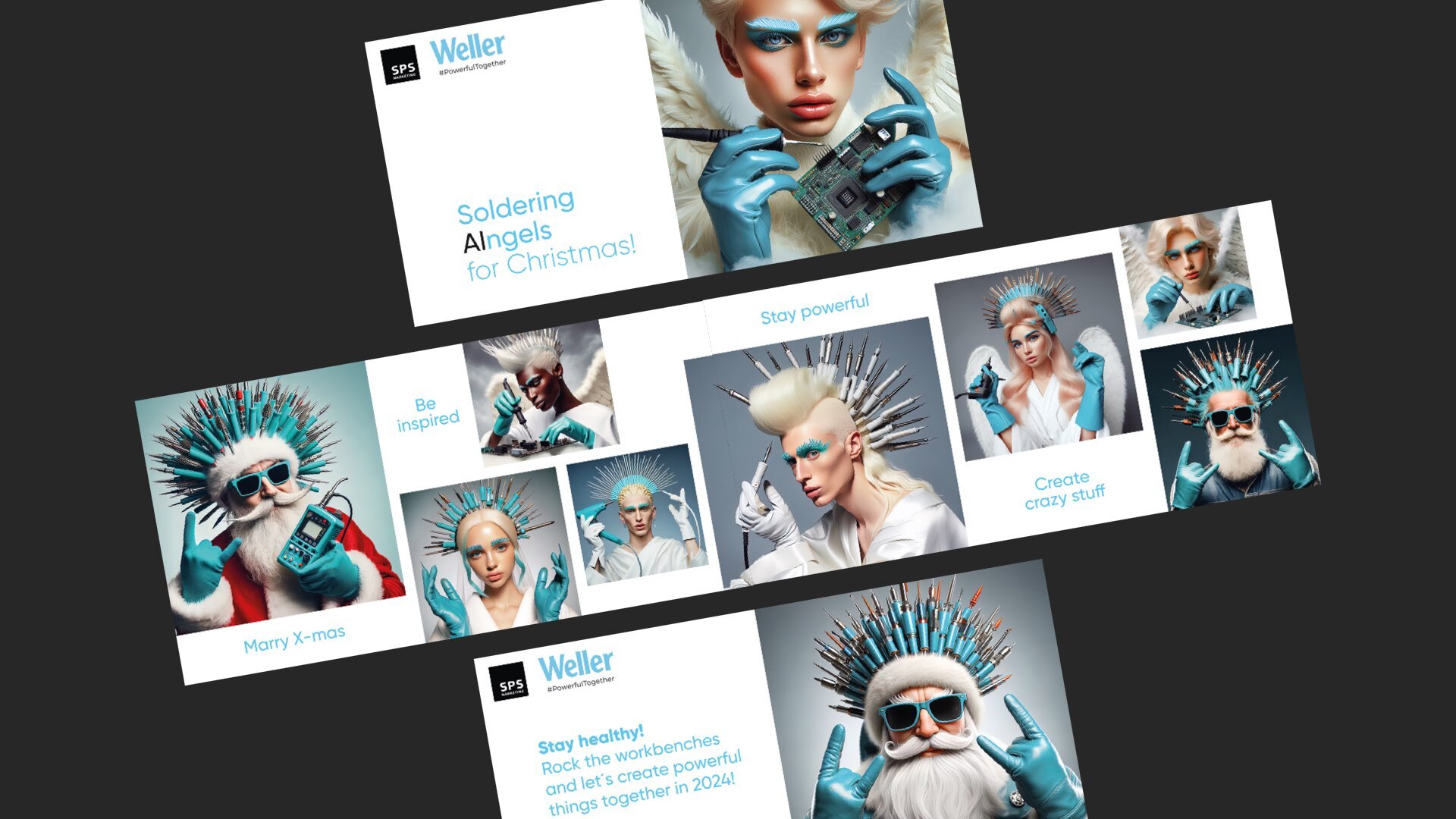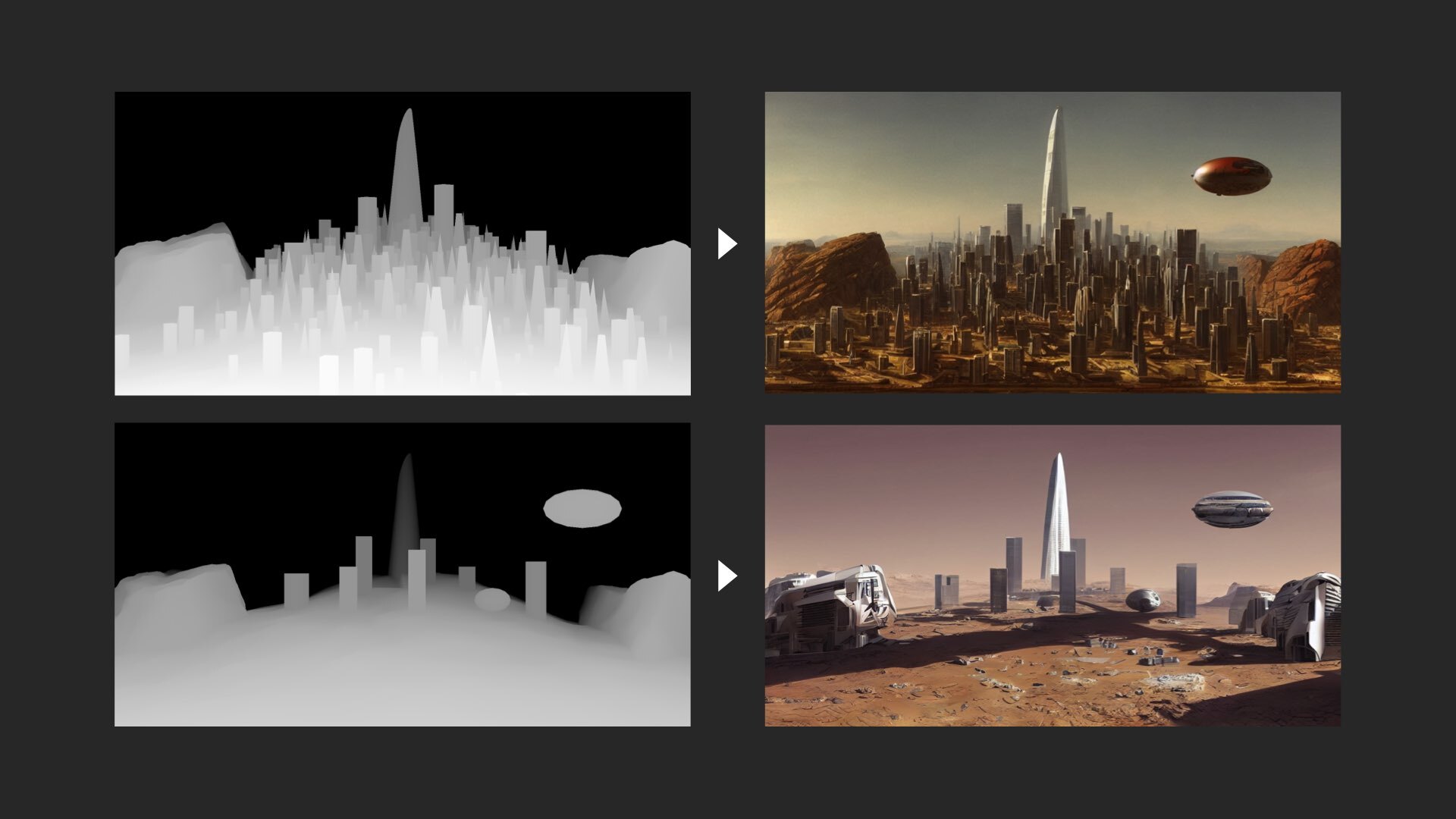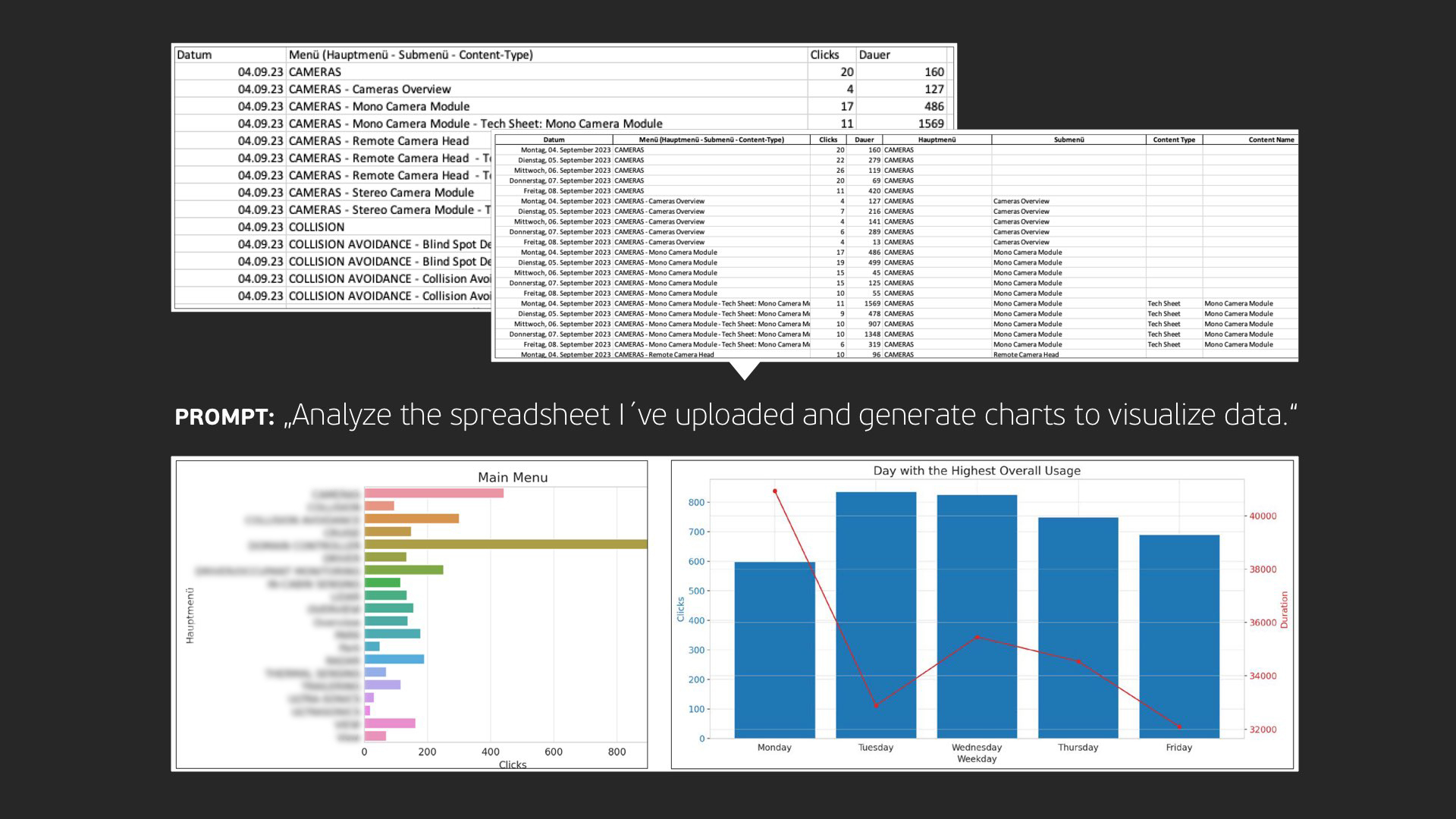


Almost a year ago, Artificial Intelligence embarked on a journey to conquer the world. This was followed by an intensive period of experimentation at our agency: we played around with the key technologies, marveled at them and learned new things. Has the way we operate as an agency radically changed? Here’s an interim conclusion.
Our journey into the future of creativity began a few months ago when AI arrived at SPS MARKETING. In various blog articles, we looked at this new world and shared our initial experiences with AI tools. Many discoveries and creative transformations followed.
Since then, the technologies and tools have evolved significantly. As have the possible use-cases of AI in marketing. After regular discussions with experts about new creative approaches and avenues, we published a podcast and a webinar. It’s also driving the integration of AI in our day-to-day agency routine. AI has a significant impact on repetitive tasks such as data analysis, targeting and campaign automation. It helps us utilize our resources more effectively, focus on strategic planning and creative output. Other exciting aspects are chatbots and generative image AI such as Midjourney, Stable Diffusion, Dalle-E 3 and Adobe Firefly.
The impressive progress of image generators has made the generation of realistic and high-resolution images with textual descriptions (so-called prompts) possible, that are almost indistinguishable from human-created work. Influencer Aitana Lopez, successful in the virtual realm, is a bot. However, a bot so real that we mistake the Spanish fitness model for a human being – an example of the possibilities inherent in generative AI (in this case, Stable Diffusion) that are both impressive and unsettling at the same time. The satirical Deepfake interview by media artist Kurt Fleisch between Armin Wolf and Herbert Kickl also shows that digital technologies can shift the boundaries between reality and fiction. An amusing fun fact that raises serious questions about the authenticity of online content and addresses the issues of the manipulation of images, as well as the responsible creation of images.
Currently, we primarily use generative image AI in conceptualization and ideation, whether for visualizing concepts during team brainstorming sessions or for presenting new ideas to clients. It enables the quick development of innovative visual concepts, the adaptation and refinement of design ideas, and image editing. The use of AI is still legally challenging because there is currently no copyright on AI-generated content. In the future, the EU's proposed AI Act (Artificial Intelligence Act) should provide clarification with transparency requirements. In the meantime, we primarily use the technology internally as a source of inspiration for initial drafts for further development. We also use it for our own creative work: For example, we used image generators and text-to-speech applications for the illustrations and animations in our amusing customer mailing for Christmas. The programs are increasingly becoming an integral part of our graphics tools – depending on usage behavior and requirements.

We achieve very realistic results with a unique look using Midjourney, the top dog for photorealistic image generation. The program is well-suited for complex and detailed instructions, as many parameters such as proportions, styles and 4x magnifications can be adjusted. The program does not yet have its own web interface. You access it through its Discord chat service. However, this should be simplified in the near future.
Less customizable, but more user-friendly, Dall-E 3 has rapidly gained ground in recent months. The tool from OpenAI can understand prompts more precisely by linking them to its chatbot ChatGPT Plus. The bot can even refine rough instructions and translate them into suitable prompts. For complex requests, it accurately interprets the interactions of multiple elements. Dall-E 3 has become more powerful and not only recognizes words, but also contexts, longer descriptions, and significantly more nuances of a prompt. As of autumn, Microsoft has integrated Dall-E 3 into Bing Chat and Bing Image Creator.
The usability of Adobe Firefly is also user-friendly. The significant advantage of Adobe's AI lies in its promise to ensure legally secure use with its own comprehensive stock photo platform. The "Generative Fill" tool integrated into Photoshop enhances existing images with AI content, generates multiple suggestions, and assists us retouching images.
The following applies to all tools: the more precise the prompts, the more convincing the output. The creativity and precision of the results depends on simple or advanced commands. With pure text prompts, motion design (in Stable Diffusion for instance), pushes the boundaries of AI when imprecise random products are produced, leading each prompt to completely new environments and camera views. AI is able to implement concrete ideas in a more targeted manner when provided with a simple but clearly described 2D scene, that conveys a spatial impression via color gradations created in Blender as a basic model with depth information. Stable Diffusion recognizes the basic structure, geometry, and camera perspectives and can thus generate 2D backplates from a simple greyscale image, which in turn can be embedded in the 3D scene. This saves a lot of time, as background environments no longer need to be created in 3D space!

With chatbots like ChatGPT, we are increasingly engaging in dialog on virtually any topic. We use the responses to specific questions and texts to generate ideas, for inspiration, research, and structuring texts and blog articles. ChatGPT is a fantastic tool for competitor analysis, email and content marketing, SEO and social media. It is also brilliant for our podcasts, whether for preparing interview questions or researching background information. Integrated into the Bing search engine, it offers simplified web searches and, with the upcoming update, access to data until April 2023. ChatGPT is more than just a language model. Did you know that it’s also suitable for working with spreadsheets? And that you can extend its functions with various add-ons?

Another huge innovation is on the horizon with Microsoft Copilot. The tool integrates the capabilities of GPT into Microsoft 365 applications such as Word, Excel, PowerPoint, Outlook and Teams, and is designed to make working with the apps more efficient. Additionally, the Business Chat chatbot will be able to access and use information from the various Microsoft applications. We are also focusing on innovative developments: To facilitate integration and data exchange between the various tools and platforms in digital marketing, we are currently developing an interface for Google Analytics 4, Google Ads, LinkedIn, Meta, Adform and Hubspot for ourselves. As an additional challenge and ambitious goal, we want to integrate AI based on the collected data that can develop new strategies by comparing previous campaigns.
The world of AI never sleeps! That's why CEO Tamara Grünzweil recommends in her presentation on AI keeping yourself up to date, for example with these newsletters: AInauten, Superpower Daily or Superhuman Zhain Khan.
Last year the development of AI was gigantic, and we are excited to see how the journey will continue in the coming year. One can only guess vaguely. In any case, we will stay on the ball to continue building bridges between technology and creativity. Inspiration, analysis, automation – for us, AI is a valuable tool for optimizing design processes, expanding boundaries and working more resource-efficiently. One thing is very clear to us: highly creative processes require human intuition. AI is not (yet) able to replicate human empathy and social interaction. We will continue to play the key role in conception and fine-tuning. An exciting time for the world of marketing!
SPS MARKETING supports its customers in using AI themselves!
CEO Tamara Grünzweil shows companies how to put AI into practice in marketing.
Would you like to find out more about the latest AI tools? Get in touch with us!
